
Since its establishment, Hong San See Temple has undergone four renovations: in 1868, 1976, 1994, and a major restoration in 2004. The 2004 restoration, in particular, received international acclaim, earning the 2010 UNESCO Asia-Pacific Awards for Cultural Heritage Conservation-Award of Excellence. It is the only temple locally to receive this prestigious honour.
After its renovation, Hong San See Temple became a unique hall of traditional Chinese temple restoration art and culture in Singapore, and it is an important historical and cultural monument of great value to the nation’s heritage. The Lam Ann Association was awarded the 2013 Outstanding Association Award by the Singapore Federation of Chinese Clan Associations in 2014 for its outstanding efforts in restoring this temple.
Hong San See Temple and the Lam Ann Association have a close relationship, can be said to be one entity, with the temple preceding the association. Hong San See Temple has witnessed Singapore’s growth and development, serving as a shared spiritual and cultural heritage of the multicultural nation.
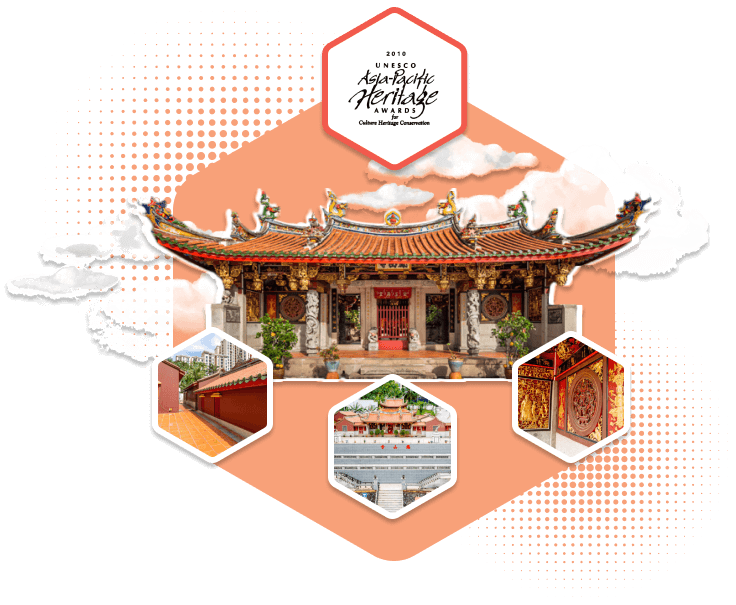
In the 16th year of Daoguang, reign of the Qing Dynasty (1836), the Nan’an sage Liang Rengui and others built the Hong San See Temple near Qingshan Pavilion (Wallich Street at Tanjong Pagar MRT Station). In the 7th year of Tongzhi, the former sages Cai Pengnan, Song Qilin and others initiated the renovation project of the temple.
For the needs of the Telok Ayer reclamation project, the Straits Settlements government requisitioned the temple land in 1905. Using the compensation money, the temple directors purchased land on Mohamed Sultan Road (formerly known as Shui Leng Tou) and rebuilt the Hong San See Temple.
he reconstruction project began in 1908 and the current Hong San See Temple was completed in 1913.
In light of the fact that many children in the neighborhood need a school to receive education, Hong San See Temple used the side chambers on both sides of the temple to establish Nan Ming School. The school accommodated over a hundred needy children, regardless of their races and religions, allowing them to receive an education. Nan Ming School ceased operations in 1930 due to a decline in student enrolment.
The Lam Ann Association officially took over the management of Hong San See Temple.
The Hong San See Temple has been gazetted as a national monument by the National Heritage Board.
The century-old Hong San See Temple, under the jurisdiction of the association, has once again suffered severe damage from termite infestation. The association started a major restoration work for the temple in 2004, and completed in end of year 2009.
Received the UNESCO Asia-Pacific Awards for Cultural Heritage Conservation-Award of Excellence.
Awarded the URA Architectural Heritage Awards by Urban Redevelopment Authority of Singapore.
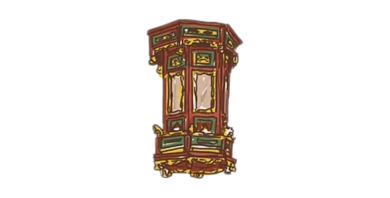
An intricately carved heavenly lantern dating from the 19th century, representative of the Jade Emperor, can be found at the front of the main hall.

The patron deity of the temple and the Lam Ann community is enshrined on the main altar with his consort. A wood carving with a filial piety theme can be found above the altar.

Dragon fish or “ao yu” carvings are placed at the four corners of the front hall behind the front entrance as a traditional ward against fire.
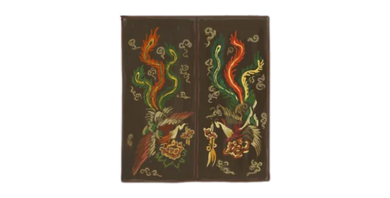
Phoenix Door Guardians Inspired by the temple’s name, a pair of phoenixes are painted on the temple’s main doors in place of the more commonly seen door guardian figurines.
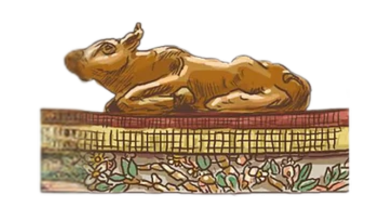
A pair of water buffalos can be found on the roof ridges surrounding the central courtyard. The water buffalo features in the legend of the patron deity’s ascension.

According to tradition, the burner on the left (looking out from the temple) is for offerings to the heavenly deities and the one on the right is for underworld deities.

Four pairs of couplets by Pan Shou can be found on the pillars of the main hall. The works of the eminent calligrapher and educationist are believed to have been completed in the 1970s.

When the temple moved from Mt. Wallich, the tombs of Lam Ann pioneers buried nearby were removed as well and re-interred in a common grave. Respects are paid to them during the annual Cheng Beng (Thanksgiving) festival.
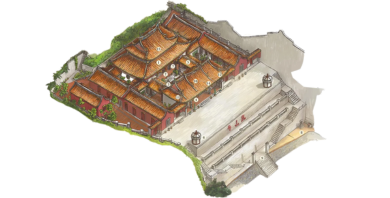
The century old weathered granite stairway has a different number of steps on each side.
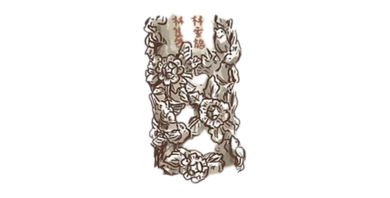
These granite columns are adorned with peonies and magpies which signify happiness and prosperity. Building columns decorated with such motifs are rare even in other parts of the world.
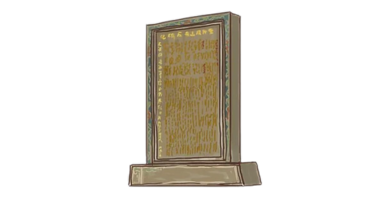
A stela dated 1869 which gives the year of the temple’s founding and the name of the founder. It is one of the few artefacts retrieved from the old temple at Mt Wallich.
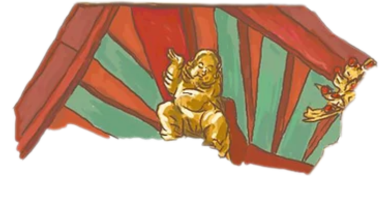
A statue of a man supporting a beam or other wooden structural element which is common in Minnan architecture. A few such statues can be seen at various locations in the temple.
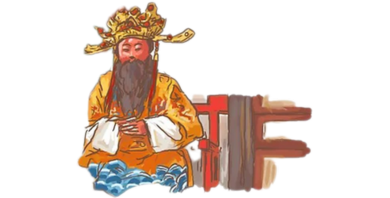
Unlike the other deity statues in the temple, the statue of the City God is fashioned like a marionette with pliable limbs and body.
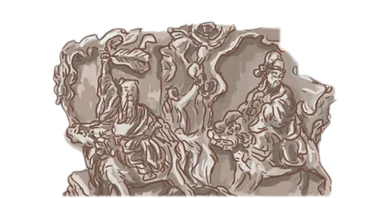
Delightful carvings of the Eight Immortals astride their mounts can be found on the “dragon” columns at the temple’s front and also on wooden structural members on either side of the main hall.